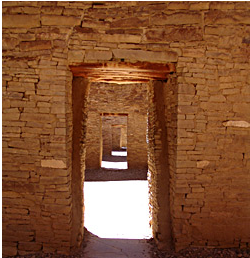Publication Date
Summer 5-1-2016
Abstract
Direct physical evidence and rock art, including head skin trophies, indicate that violence linked to warfare was prevalent among the preceramic farmers of the North American Southwest known as Basketmakers. The degree of intergroup conflict indicates that Basketmakers may have needed defense against atlatl darts. In the early 1900s archaeologists suggested that distinctive wooden artifacts served this purpose. Despite resembling Puebloan rabbit sticks, the first to report these S-shaped and flattened sticks with longitudinal facial grooves thought that hunting was not their purpose. Yet the sticks appear singularly inadequate for the task of atlatl dart defense. I evaluate the suggested function of these artifacts and their relationship to warfare in Basketmaker II society. I consider multiple lines of evidence to analyze stick function: ethnography, experiments, use-wear, bioarchaeological markers of violence, and prehistoric art. I conducted a detailed analysis of almost 500 prehistoric flat curved sticks and radiocarbon dated 63 of them. Some of the documented variation in this artifact class is geographically patterned, likely based on learning networks, but dating reveals that much of it is linked to an evident shift in tool function. The sticks become more like ethnographic rabbit sticks through time and exhibit a corresponding increase in traces of such a use. Yet, there are those with damage that seems indicative of atlatl dart defense. My experiments showed that a defender can knock aside atlatl darts from close range with these sticks. Some tribes in South America perform a similar feat in a duel-like context and Diego de Landa may have observed an analogous ritual in the 1500s among the Yucatec Maya. The fending hypothesis is most logical in a duel. Many of the analyzed prehistoric sticks come from a known Puebloan war god shrine in central New Mexico, where an informant identified one as symbol of membership in a warrior society. In addition to prowess as a man killer, war society membership in the distant past might have involved atlatl duels where dart defense with a stick displayed great skill and courage. Basketmakers may have considered S-shaped sticks as an ancient symbol of warrior status.
Keywords
warfare, Basketmaker II, fending stick, Southwest
Document Type
Dissertation
Language
English
Degree Name
Anthropology
Level of Degree
Doctoral
Department Name
Anthropology
First Committee Member (Chair)
Bruce B. Huckel
Second Committee Member
James L. Boone
Third Committee Member
Ann Ramenofsky
Fourth Committee Member
Patricia M. Lambert
Recommended Citation
Geib, Phil R.. "Basketmaker II Warfare and Fending Sticks in the North American Southwest." (2016). https://digitalrepository.unm.edu/anth_etds/27



